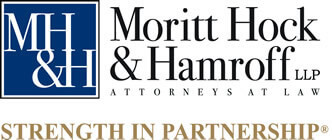Paycheck Protection Program Reauthorization and The Paycheck Protection Program & Health Care Enhancement Act
On March 27, 2020, the President signed the Coronavirus Aid, Relief, and Economic Security Act (the “CARES Act”) into law providing, among other relief, up to $349 billion to fund loans to small businesses affected by the outbreak of COVID-19 (the “Paycheck Protection Program”). The program is being administered by the U.S. Small Business Administration (the “SBA”) and the loans are 100% federally-guaranteed, do not require the borrower to pledge collateral, nor does it require the personal guaranty of the borrower’s principals.
Small businesses and sole proprietorship applications for Paycheck Protection Program loans were accepted beginning on April 3, 2020 with applications from independent contractors and the self-employed accepted commencing on April 10, 2020. Due to the overwhelming demand for loans, the original authorized amount of $349 billion was quickly exhausted in less than two weeks of the program going into effect. According to statistics released by the SBA, there were 1,661,367 loans issued by 4,975 lenders with an average loan amount of $206,000[1]. There are still countless applications pending and many small business owners left wondering how their business will survive the pandemic.
On April 24, 2020, the President signed H.R.266 – Paycheck Protection Program and Health Care Enhancement Act into law. This new Act, among other things, reauthorized the Paycheck Protection Program and Economic Injury Disaster Loans (EIDL) grants and loans. Some of the key terms are as follows:
- An increase in the authorization level in the amount of $310 billion to the Paycheck Protection Program (increasing to total authorization level to $659 billion).
- An increase in the authorization level in the amount of $10 billion to the Economic Injury Disaster Loan advances/grants (increasing to total authorization level to $20 billion), which will remain available until the funds are exhausted.
- An increase in the authorization level in the amount of $50 billion to the Disaster Loans Program Account, which will remain available until the funds are exhausted.
- Agricultural enterprises (as defined in §18(b) of the Small Business Act (15 U.S.C. 647(b)) with 500 employees or fewer are now eligible for EIDL grants and loans.
- Creates set-aside provisions for certain small financial institutions for Paycheck Protection Program, as follows:
- Insured Depository Institutions and Credit Unions that have consolidated assets of not less than $10 billion and not more than $50 billion – $30 billion available for Paycheck Protection Program loans.
- Community Financial Institutions (defined as minority depository institutions, certified development companies, microloan intermediaries, and State or Federal Credit Unions), insured depository institutions with consolidated assets of less than $10 billion, and credit unions with consolidated assets less than $10 billion – $30 billion available for Paycheck Protection Program loans.
Given the large number of unprocessed applications currently in queues of numerous lenders across the country, the funds in the Paycheck Protection Program will likely be quickly exhausted. Accordingly, it is imperative that you reach out to your lender if you don’t already have an application pending to start the application process as soon as possible.
The current Paycheck Protection Program borrower application form can be found at: PPP Application Form We recommend that you gather the following information needed to complete your application:
- Documentation to verify the number of employees on the company’s payroll and the applicable pay rates for the employees during the applicable period (see our previous blog posts for relevant periods). Remember to include payroll filing taxes, state income, pay roll and unemployment insurance filings.
- If you own your business location and have a mortgage, gather your mortgage payment information and utility info. To the extent available, gather bills/invoices and cancelled checks evidencing the payments.
- If you lease your business location, have a copy of your lease and utility info. To the extent available, gather bills/invoices and cancelled checks evidencing the payments.
We are closely monitoring this continually developing area and will endeavor to keep our clients updated as the Paycheck Protection Program progresses. We encourage our clients to reach out not only to us, but also to their local lenders with any questions that they may have regarding the economic assistance programs available.
If you have any questions, please feel free to reach out to our Commercial Finance and Secured Lending attorneys Brett P. Garver at (516) 880-7266 or bgarver@moritthock.com, Christine H. Price at (516) 265-1176 or cprice@moritthock.com, and Brian P. Boland at (516) 880-7239 or bboland@moritthock.com.
[1] U.S. Small Business Administration. (2020). Paycheck Protection Program (PPP) Report, Approvals through 12 PM EST 4/16/20. Retrieved from: SBA PPP Loan Report (last visited April 21, 2020).



